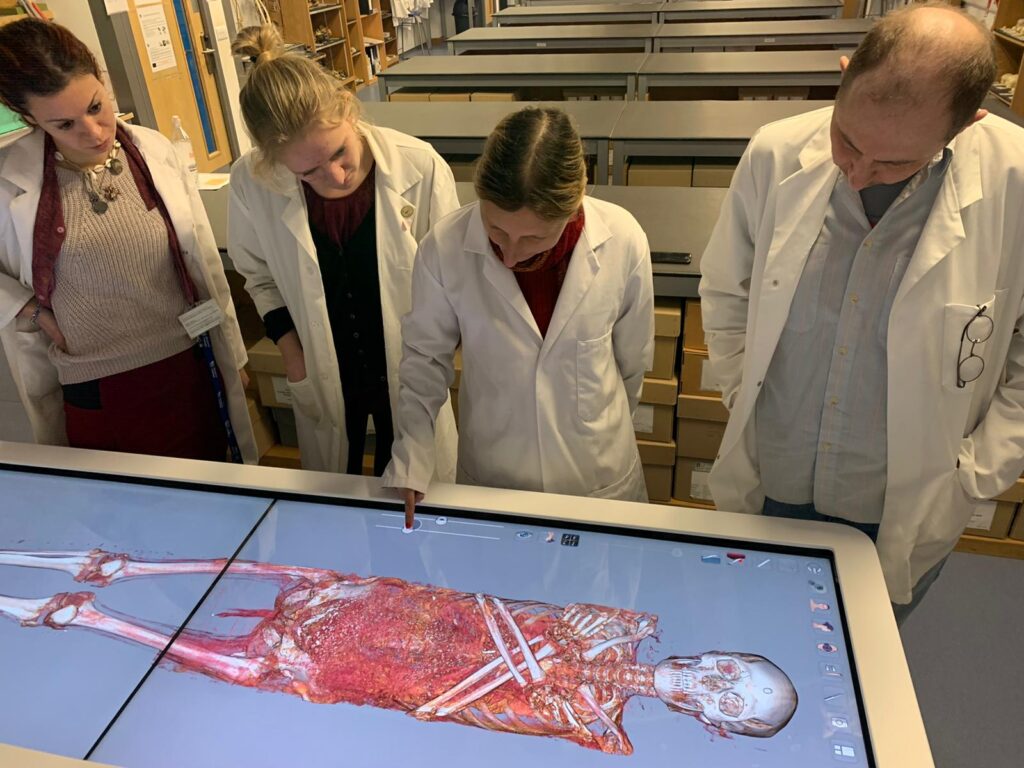
You have probably heard about this rationale behind the 3D anatomy adoption before.
Many pieces of research have been conducted to prove how virtual dissection or 3D cadavers are improving student academic performance in the Anatomy and Physiology class. From boosting the scores on laboratory examinations to increasing the passing rate in the course, 3D dissection has made a name for itself in the education industry.
However, the recent news landscape seems to have uncovered other reasons beyond academic achievement that have induced a shift towards 3D anatomy dissection.
Here are the top three:
3D anatomy allows for flexible and autonomous learning
Unlike traditional cadaver-based learning, students don’t have to worry about mistakes when dissecting 3D cadavers. Operative errors can be reversed, which helps amplify student’s learning experience and allows them to thoroughly master the anatomy concepts from dissecting a body region repeatedly. Jason Porterfield, a teacher from Trinity High School, acknowledged the value of 3D anatomy, saying that “What’s great is if we cut (the virtual cadaver) and we make a mistake, we can just start over, whereas if we have a real cadaver and we cut it, we lose it” in an interview with Observer-Reporter.
By allowing students to virtually dissect and observe anatomical structures repeatedly, virtual dissection activates student’s creativity to manipulate the 3D cadaver through their own imagination, thus unlocking their curiosity towards understanding human anatomy. As interest begets commitment, students tend to spend more time studying anatomy in the digital anatomy lab.
Such flexibility also gives students the freedom to explore the subject on their own, encouraging autonomous learning. For example, using the Anatomage Table, both students and professors are able to “upload our own images, including MRI and CT scans…while working on various projects for class or personal research“, according to a statement made by Angela Bojrab, associate professor in Trine’s Department of Science. Vice versa, students can also download medical images featuring specific body parts or pathology for their self-learning.
3D anatomy alleviates economic burdens for schools

Obtaining and maintaining fresh cadavers have been generating economic burdens for schools. Since early 2010, the rise of organ donation has resulted in the deficit of physical cadavers, making it hard for schools to find a cadaver. Interelattedly, the high cost of a plastinated cadaver – which can cost as much as $200,000 – has pushed schools to resort to virtual dissection.
In addition, the budget spent preserving a cadaver is not small. To keep it at a laboratory, the school may need to spend at least a million dollars. As the specimens of a physical cadaver will be degraded after a limited time of use, it creates both economic and educational challenges.
“Once a human cadaver is dissected, you can re-use it again in a limited way, but it degrades rapidly. This Anatomage technology enables us to use and re-use the same ‘cadaver’ indefinitely without previous dissections affecting how students see the anatomical structures” Carla Serfas, HFC biology instructor at Henry Ford College.

With 3D anatomy, recurring costs are no longer a problem. Tools like the Anatomage Table provide 4 different 3D cadavers for students to dissect and observe real human anatomy and physiology functions in an unlimited way. School administrators can rely on such tools as long-term resources that can lower management costs.
3D anatomy establishes technology leadership for schools

Last autumn, Patrick Henry Community College won an Innovative Use of Technology award from Virginia’s governor through its adoption of 3D anatomy. The college has then become the first college in Virginia to win such a tech award in 19 years.
When it comes to student recruiting, nothing is more important to parents than sending their kids to a highly-established school. In this digital age, technology plays a key role in establishing creditability for universities and high schools – and the award that PHCC earned by its implementation of virtual dissection is the testament for such notion.
It’s safe to say that technology will continue serving as a recruiting tactic for universities. US News Rankings – one of the most trusted websites in university rankings – has begun to release a list of Most Innovative Schools since 2019. The list signifies the high demand for innovative universities – those are using technology to transform their classroom curriculum and student life.
It turns out that these are not the only reasons why 3D anatomy has been gaining popularity. Interested in learning more about how 3D anatomy is transforming schools, check out our case studies:




Comments are closed.